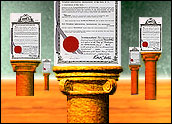
The complexities of modern life amuse us, confuse us and confound us. The vast majority of people using computers and smartphones have hardly a clue as to their inner workings. These devices are a mystery. They are magical, and we are much like Alice in this technological wonderland.
Even more complicated are the patents that cover the many manifestations of these devices, as well as all other technologies. Indeed, patents are a potent tool for individuals and companies wanting to protect their innovations and secure their competitive edge.
The Patent-Eligibility Problem
A patent is an exclusionary right — i.e., a government grant given to inventors to stop someone else from taking or infringing their creation, their property, their intellectual property, as specifically set forth in the patent documents, particularly the claims. A claim, like a deed to land, describes the boundaries of the invention. Unlike a deed, however, this grant is not absolute and is only for a fairly short time (20 years from filing the patent) — perhaps more like a lease.
Judges, just like the rest us, confront technologies that mystify. Unlike us, however, they can render a judgment on whether a technological advancement in a patent is sufficiently of this world, as opposed to being too fanciful or abstract. The Supreme Court justices (and more recently the judges of the Federal Circuit) have been wrestling with the issue of abstraction in patents for centuries.
Under patent law, all inventions must satisfy many rigorous requirements before grant, chiefly novelty or newness, and nonobviousness — i.e., the invention must constitute an advancement to knowledge over what is known. Patents can also be attacked at any time if indeed they were not new at the time of filing. The invention must also satisfy various other requirements regarding sufficiency of the description or disclosure.
Of current interest, however, is the threshold requirement, 35 U.S.C. 101, which generally governs what can be patented — i.e., the claims cannot encompass natural things and cannot be too abstract. The Supreme Court has also provided guidance here that patents can encompass anything under the sun made by man.
The issue of abstraction and what is too abstract for patenting is at the heart of the CLS Bank v. Alice Corp. case at the Federal Circuit this week. Since the dawn of patent law — and particularly since the introduction of the computer and software many decades ago — courts have struggled to formulate a decisive rule to determine patent eligibility, i.e., patent worthiness, to cover cutting-edge technologies. Some justices of the Supreme Court consider modern innovation as simply obvious variants over what is known, or mere attempts by patentees to claim natural processes or abstractions. The legitimate fear here is that granting broad abstract patents may undermine future innovation.
The D.C. trial court in Alice summarily considered the heart of the claimed invention, directed to a computer-implemented risk minimization technique, as too abstract and not patent eligible — without any investigation as to novelty and the other requirements. On appeal, the Federal Circuit majority reversed, finding the claims, if read as a whole and not just their heart, patent eligible, leaving the issues of novelty and obviousness to be resolved by the trial court.
However, in light of recent Supreme Court cases such as Mayo v. Prometheus, the dissent felt that first looking at the heart or gist of the invention was sufficient, and the claims were thus too abstract. The dissent thus leaves the door open for Supreme Court review.
Why should this matter? Since modern innovations are, by their very nature, less physical than inventions of yesteryear — e.g., the plow — summary denial of these more complex innovations, typically made by American innovators, hurts the economy. Companies tend not to invest in technologies they cannot protect. Adding to this, Justice Breyer and others have evinced a hostility to patents and an eagerness to curtail their scope, particularly in the software and business patenting areas.
Further, the recent monumental patent reforms, now being implemented, are making inventing more expensive and more complicated, squeezing out many small inventors in favor of large corporations. Innovation protection is under siege.
Let Objectivity Rule
The majority in Alice posits a reasonable rule to follow in litigating patents: Don’t jump to conclusions about the thorny issue of patent eligibility where other avenues for answers are readily present. The chief judge of the Federal Circuit, Randall Rader, is also in favor of this approach. If the invention, as claimed, is not manifestly abstract, why indulge in the quite subjective and even speculative analysis of patent worthiness?
Instead, the trial may first look to the other and far more certain, rigorous and straightforward requirements like novelty. If these more objective requirements are not met, then the more philosophical exercise of patent claim abstraction is not necessary.
The Gordian knot was a highly complicated puzzle in ancient times. Determining patent eligibility of a complicated invention is like trying to painstakingly unravel that knot. Instead, like Alexander the Great, the slicing power of anticipatory references can better eviscerate an unworthy patent, greatly simplifying the analysis on objective grounds.
Hopefully, the Supreme Court will not meddle again into this subtle and elusive topic. Like a definition of “obscenity,” the issue of abstractness is difficult to quantify, hard to predict and tough to legitimately defend. Unfortunately, some judges know abstraction when they see it — hardly a just standard. Only in the most egregious of circumstances should courts first look to patent eligibility under section 101.
With the economy stalled and jobs scarce, now is not the time to thwart American inventiveness by unnecessary and subjective determinations of patent worthiness. To be valid, patents must pass through a gauntlet of statutory requirements, each of which can thwart obtaining a patent right. Once issued, a patent is presumed valid. In challenging patents, look to the requirements that are most likely to obtain an objective, feasible and efficient judgment, instead of delving into the mysterious realm of subjective thoughts, tumbling down into a rabbit hole.


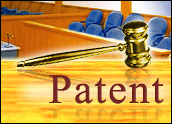
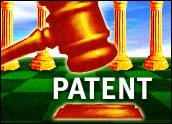
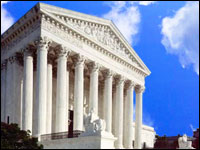
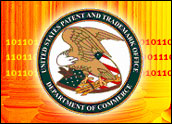
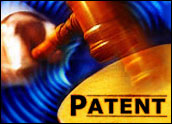











































Social Media
See all Social Media